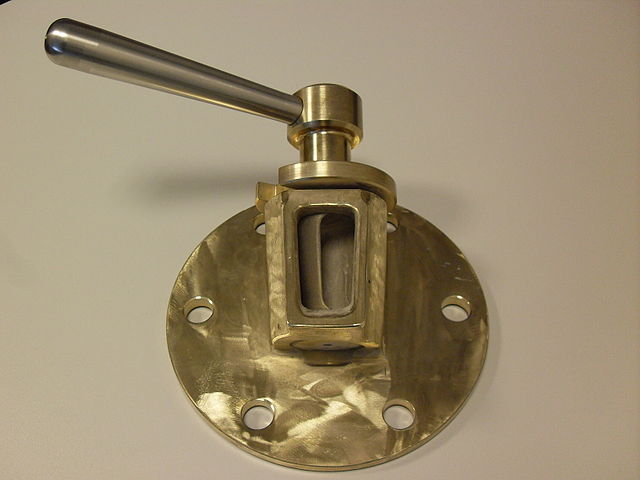Brass is an alloy of copper (Cu) and zinc (Zn), in proportions which can be varied to achieve different colours and mechanical, electrical, acoustic, and chemical properties, but copper typically has the larger proportion. In use since prehistoric times, it is a substitutional alloy: atoms of the two constituents may replace each other within the same crystal structure.
Islamic Golden Age brass astrolabe
Brass lectern with an eagle. Attributed to Aert van Tricht, Limburg (Netherlands), c. 1500.
Microstructure of rolled and annealed brass (400× magnification)
Brass sampling cock with stainless steel handle
An alloy is a mixture of chemical elements of which at least one is a metal. Unlike chemical compounds with metallic bases, an alloy will retain all the properties of a metal in the resulting material, such as electrical conductivity, ductility, opacity, and luster, but may have properties that differ from those of the pure metals, such as increased strength or hardness. In some cases, an alloy may reduce the overall cost of the material while preserving important properties. In other cases, the mixture imparts synergistic properties to the constituent metal elements such as corrosion resistance or mechanical strength.
From left to right: three alloys (beryllium copper, Inconel, steel) and three pure metals (titanium, aluminum, magnesium)
Liquid bronze, being poured into molds during casting
A brass lamp
A gate valve, made from Inconel








